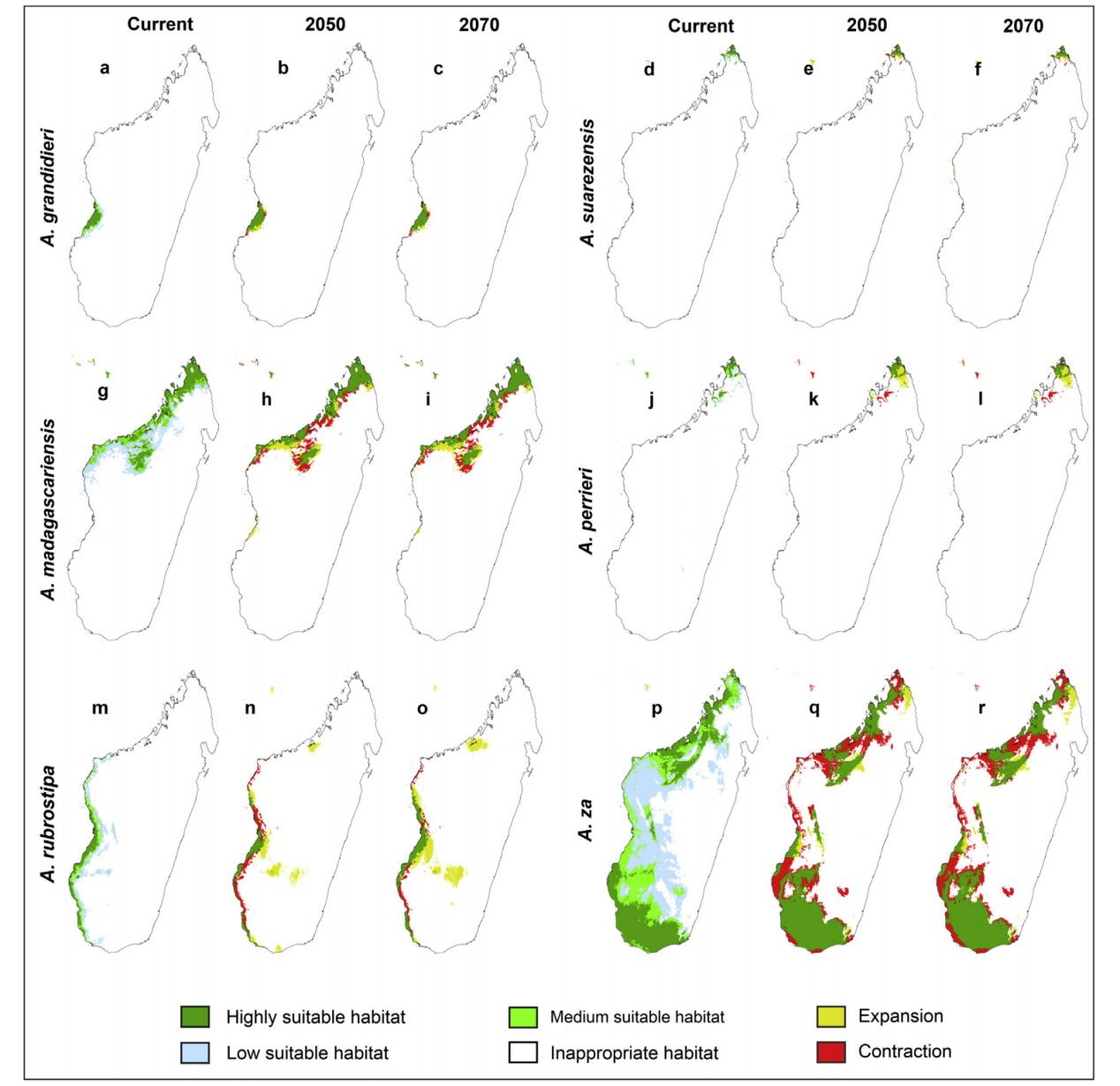
Madagascar is an important world conservation "hot spot" that supports a large number of endemic species. It is home to six endemic baobab species, the most remarkable trees in Africa. What will be the effect of global climate change to these ecological keystone species in Madagascar?
To answer this question, WAN Junnan, supervised by Prof. YANG Qingfeng from the Wuhan Botanical Garden of the Chinese Academy of Sciences (CAS), obtained the current distribution data of the six baobab species from both open databases and field surveys, and modeled the suitable habitat in the current and that in the years 2050 and 2070 based on distribution and environment data.
The modeling indicates that the distribution pattern of baobabs is temperature sensitive, and distribution of the three baobab species endemic to the dry forest in southern Madagascar are also affected by precipitation. The potential effects of climate change on suitable baobab habitat differ for each species.
For A. suarezensis, A. perrieri and A. rubrostipa, the total area of suitable habitat in 2050 and 2070 is predicted to increase, whereas the total area of suitable habitat for A. grandidieri is likely to remain static. However, the area of the suitable habitat for A. madagascariensis and A. za may decrease significantly.
Despite the predicted increase in habitat area for three baobab species, the current distribution of suitable habitat of all six species is predicted to undergo a contraction, and the original habitats of A. za, the mostly widespread baobab species, will be reduced by 40%. Moreover, distribution of several baobab species will be fragmented due to the loss of the original habitat.
Large baobab trees are generally old and are viewed as keystone species in dryland forests. It takes hundreds of years for young baobab trees in new habitats to restore the economic value of baobabs for Malagasy people and ecological value of related biocoenosis. So, for baobab conservation, the contraction of the original habitat should be given great attention. Thus, in suit conservation should be the main conservation strategy for those baobab trees in areas predicted to contract in response to climate change.
The research entitled "Modeling impacts of climate change on the potential distribution of six endemic baobab species in Madagascar" was published in Plant Diversity.
This work was supported by the National Natural Science Foundation of China and the Sino-Africa Joint Research Center of CAS.

The distribution of potential suitable habitat for six baobab species in Madagascar at the present and the years 2050 and 2070. (Image by WAN Junnan)

86-10-68597521 (day)
86-10-68597289 (night)

52 Sanlihe Rd., Xicheng District,
Beijing, China (100864)

